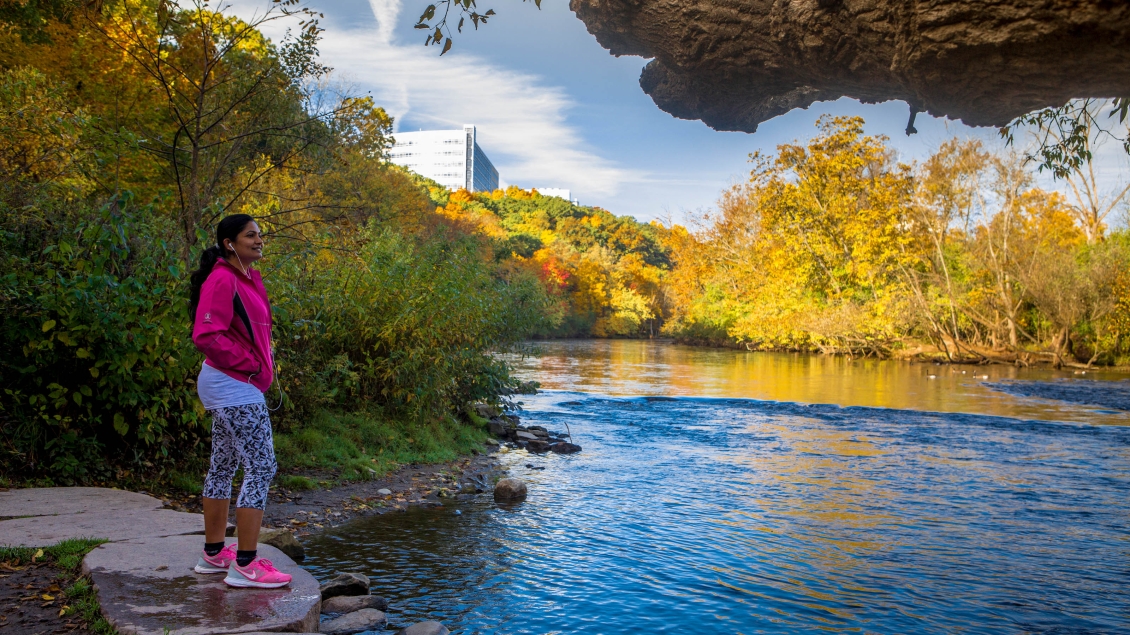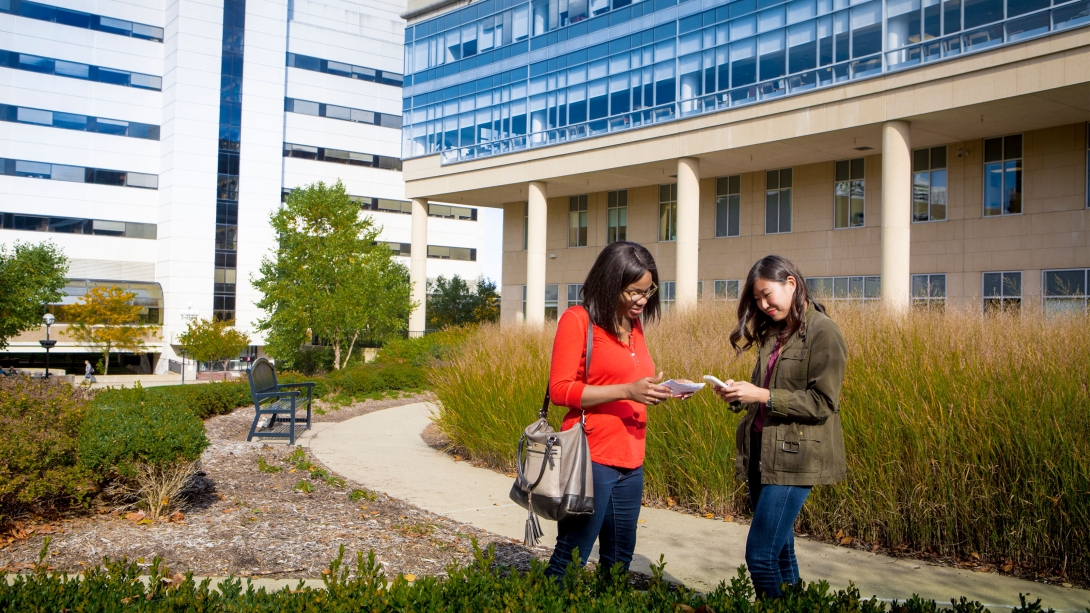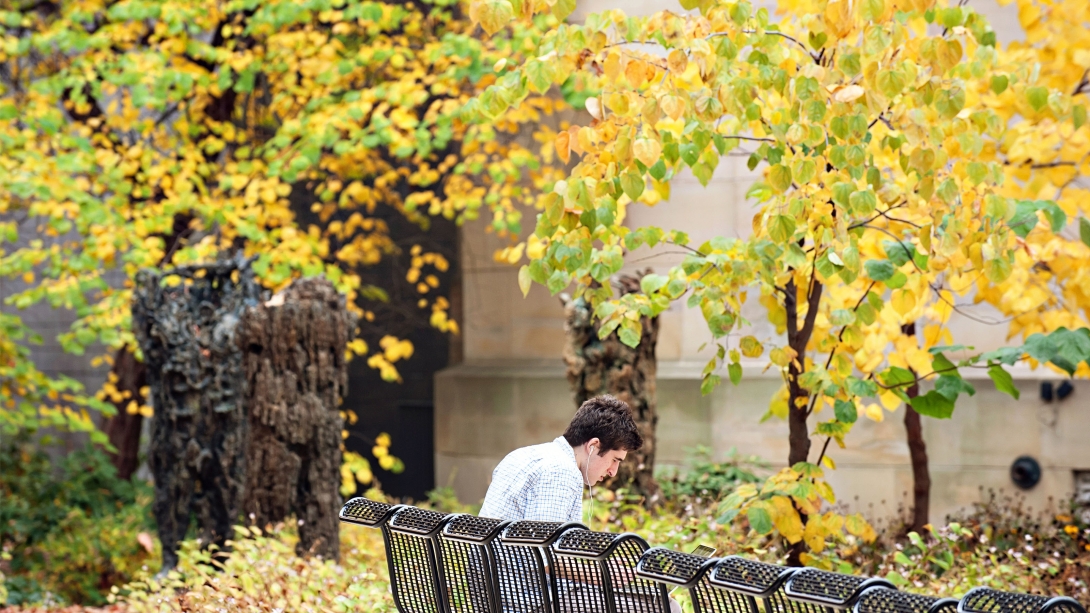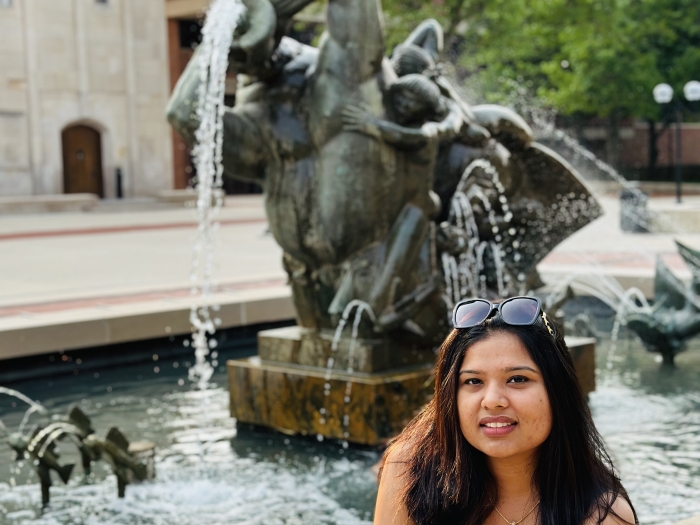
Welcome to Michigan Medicine
Steps on navigating your first few days in Ann Arbor
Don’t worry about getting lost — everyone is so nice and will help point you in the right direction. JavaBlu in Taubman has $1 coffee refills if you bring your own mug — great for getting you through long lecture days.”
1. Get Set Up

First things first: It’s helpful to get your MCard as soon as possible, so you can start riding city buses for free.
If you’re bringing a car: Familiarize yourself with the state of Michigan’s requirements for car insurance and registration. Tip: If you need to go to the Secretary of State’s office, make an appointment online to save yourself a long wait.
Learn the bus routes: There are two kinds of buses in Ann Arbor — “blue buses” aka the Magic Bus run by the university, and city buses known as AAATA or TheRide. You can ride both for free with your MCard. Download the Michigan App for help with finding your way around.
If you need to open a bank account: The International Center provides some information about banking in Ann Arbor. If you prefer a local bank, check out the U-M Treasurer’s Office Local Bank Survey, which lists locations and services for all banks on or near campus.
If you have immigration questions: Contact your program or advisor for guidance. You can also consult with the International Center.
If you need a notary: Get free notary services through the university’s Student Legal Services.
Setting up utilities: The local energy provider is DTE Energy, which can help with transferring utilities into your name for a new apartment or home so that you can receive the bills. Work with the City of Ann Arbor or your local municipality to transfer the water bill. Ask your landlord if you’re not sure whether utilities need to be transferred to you!
Internet options: Ann Arbor and the surrounding area are served by Comcast/Xfinity internet and AT&T. When you’re on campus, you’ll be able to connect to one of several secure Wi-Fi networks.
Get tech support: Set up your devices with any Michigan Medicine software you need by talking to Health Information Technology & Services (HITS), the medical campus IT provider. HITS also has drop-in Help Me Now locations for in-person help.
Furnish your place: With a large population of students, scholars and young professionals, there’s no shortage of good thrift-store finds in Ann Arbor to furnish your new home. Once you’re added to U-M mailing lists or Facebook groups for your program, you may also find free items given away by folks moving out of town. The closest IKEA is in Canton, about a 30-minute drive from Ann Arbor.
2. Reach Out
Make connections: Ask a program advisor or new peer to give you a tour of the Medical Campus or your workspace, so you can start to learn how the buildings are connected by pedestrian walkways, elevators, escalators or hallways. This comes in handy in winter, when you may want to travel inside as much as possible. Find information about accessibility, including building features and accessible bathrooms.
Say hi: Stop in to your program office to say hello to the administrators or check out the lounge space provided for trainees. You may be rewarded with some free snacks!
Find a new favorite: Explore the list of Things to Do in Ann Arbor and find a new coffee shop, park, restaurant or bookstore that feels a little bit like home.
3. Take a Break

Cheap coffee: Bring your own mug to get $1 coffee at JavaBlu, the coffee shop just inside the main entrance to the Taubman Health Sciences Library.
Take a breath: Visit the atrium at the Frankel Cardiovascular Center to check out the tropical plants and water feature, a favorite study or break spot in the hospital.
Save money: Michigan Medicine learners recommend a2happyhour.com to find local happy hour deals, and Groupon for savings at lots of local businesses. You can also get discounts at many local businesses with your MCard. “Being Not-Rich at U-M,” a student-produced guide for lower- and middle-income learners, also has comprehensive advice on navigating the university.
4. Winter is Coming

Get some winter gear: If you’re from a warm climate and don’t have a winter coat or boots, you may want to look for some off-season deals at Labor Day sales at a local or online outdoor gear store, or look for Black Friday sales (the day after Thanksgiving). Check out this comprehensive guide on winter gear compiled by U-M students.
Many folks also recommend a full-spectrum light to combat winter blues and gray days — especially if you’re moving from a sunny climate. But don’t worry! It doesn’t get cold until late fall or early winter.


